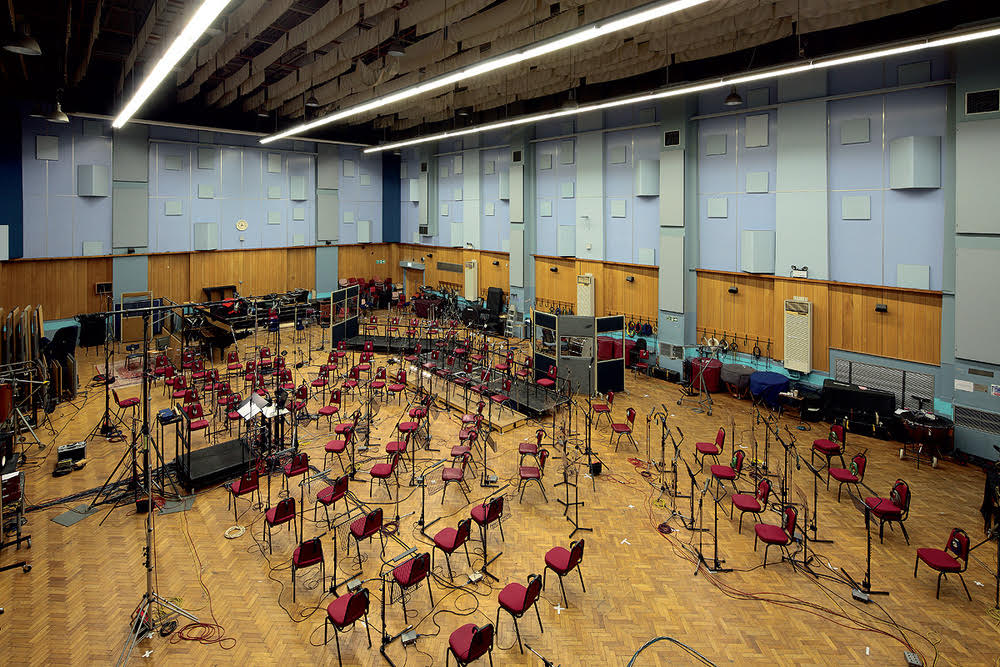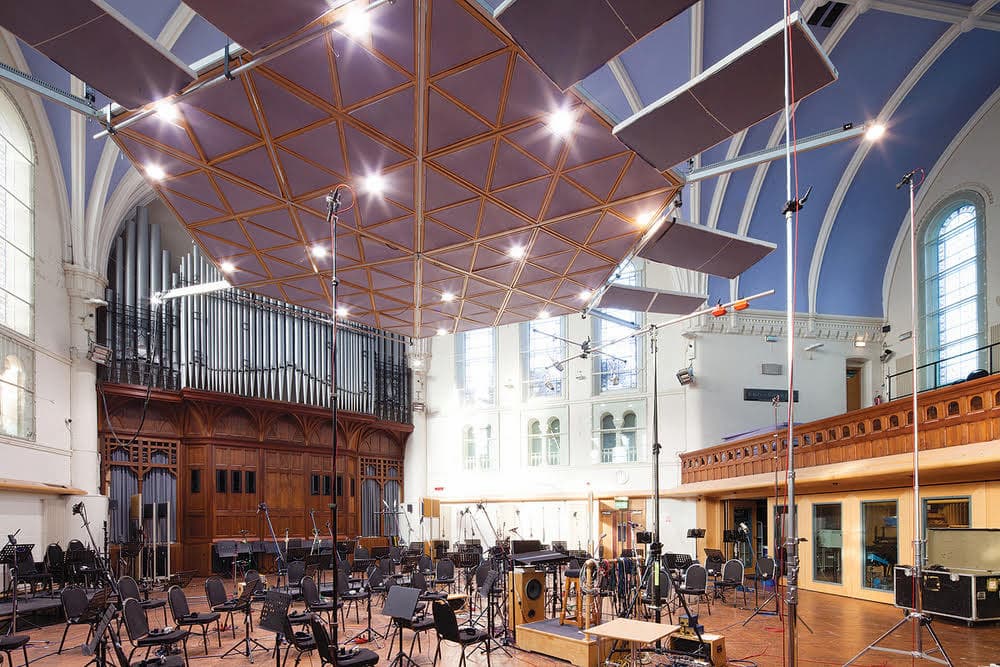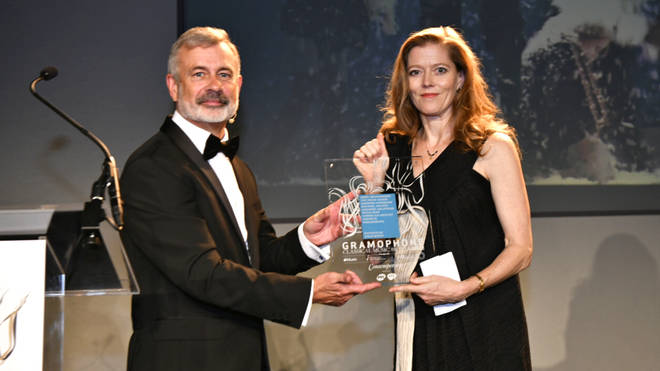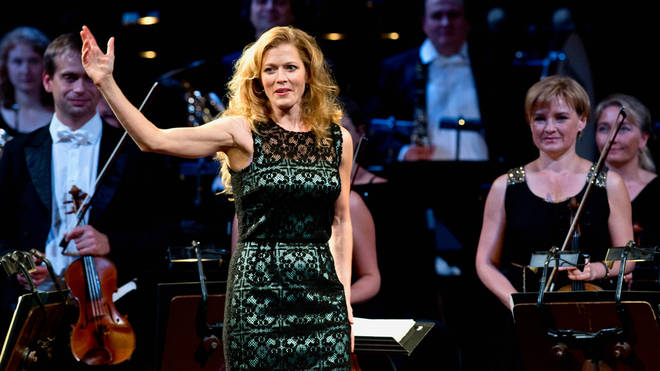It's all about the classical music composers and their works from the last 400 years and much more about music. Hier erfahren Sie alles über die klassischen Komponisten und ihre Meisterwerke der letzten vierhundert Jahre und vieles mehr über Klassische Musik.
Total Pageviews
Friday, October 14, 2022
Dmitri Shostakovich - The Second Waltz
Lea Salonga - On My Own (Les Misérables) [720p]
Smokey Mountain Reunion 2020: Paraiso/Better World
Philippine Madrigal Singers: Paraiso
A Glimpse Into the World of the Music Session
by Oliver Pashley, Interlude
Recording Film and TV Music Behind-the-Scene
Cast your mind back to the last movie or TV show you watched. Chances are there was music of some kind, enhancing the mood, providing suspense at cliffhangers, setting the scene or underscoring a poignant moment. Wherever we look in the media, music is everywhere, but did you ever wonder who exactly plays the instruments on these recordings, or how the process works?
You’d be forgiven for not giving it a second thought; music for media, after all, is there to enhance the overall experience, and arguably is most effective when it doesn’t stick out too much. There is, however, a whole industry behind recording live musicians and getting music ready for picture.
In a place like London, recording studios can be found all over the city, ranging from humble setups in converted warehouses to grand institutions with international reputations, like Abbey Road and AIR Studios.
The studios themselves don’t employ musicians. This job is outsourced to external booking agents, known as ‘fixers’. The musicians in the fixers’ books often have heaps of experience and are some of the best players in their field. The pace of recordings is fast and high-pressured, so being engaged for a recording session requires you to be at the top of your game. In London, session musicians can also be found freelancing in orchestras, in shows on the West End, touring with chamber groups – for many musicians, session work makes up just one part of their career.

Abbey Road Studio One: The world-famous studio where many film soundtracks have been recorded, including the soundtracks to the Lord of the Rings trilogy and The Empire Strikes Back
One of the great things about doing recording sessions as a classical musician is the variety of music you come into contact with. I’ve been in orchestras and ensembles recording music for films, TV dramas, nature documentaries, pop albums, art house movies… the range is so broad, and it keeps the work endlessly interesting.
For film and TV, we musicians come into the production process relatively late. A movie’s soundtrack isn’t finalised until pretty much the final edit, seeing as scores and parts have to be made for a large number of people. Changing and editing orchestral scores is a time-consuming (and costly) process, so it’s often left as late as possible in order that (hopefully) the music can simply be recorded and lined up with finalised visuals that won’t change much if at all, to avoid costly adjustments to the soundtrack.
Of course, there is the magic of editing (it is possible to record a whole orchestra and then chose and change it at your whim) but broadly speaking, recording sessions happen mostly towards the end of production, rather than the beginning, and there is something exciting about being part of a process much bigger than yourself. Sometimes there are screens in the studio that playback footage as you’re recording, and to see the show coming to life in real-time can be quite thrilling.
Not every soundtrack you will have heard will have been recorded live, however. The landscape of recordings has changed dramatically in recent decades, spurred on by huge advances in technology. As software has become more and more sophisticated, commercial ‘sound libraries’ have flooded the market, letting composers create incredibly realistic-sounding scores just by using a bank of prerecorded sounds.
While these can be incredibly useful, enabling productions without the budget to accommodate live orchestral setups to achieve realistic-sounding results, there is still very much a place for live recording, and it is still very much part of the production process for many TV shows, movies, video games and other soundtracks.

AIR Studios Exterior: The outside of Abbey Road’s less well-known cousin, AIR Studios. You’d be forgiven for walking past
without even realising it’s there; AIR has had many previous bases, but this converted church has been its home since 1992.
The level of responsiveness and adaptation you can request of professional musicians is something that, in my opinion, cannot be equaled by any sound bank. It’s commonplace in sessions to be asked to play several takes in a different way – the director or music supervisor might want it to sound more angry, or calm, or glassy, excited, soulless… the list goes on. That is much easier to achieve with a human being who can respond on the spot rather than having to recalibrate a preset batch of sounds.
Session work, while sometimes stressful, can be incredibly rewarding. It may take a while to get into that particular world, at least in the UK, but it offers interesting and challenging opportunities that can fit nicely into a freelancing career.
Ever wondered what actually happens in a recording session, or how different they are from a live performance? Read on to discover more…
Thursday, October 13, 2022
Barbara Hannigan on mentoring the next generation of classical music stars
By Sophia Alexandra Hall
@sophiassocialsThe legendary Canadian soprano, Barbara Hannigan, scooped the award for ‘Artist of the Year’ at the Gramophone Awards 2022 earlier this week. We got a chance to speak to her about how mentoring influenced her career as an artist and how she wants to pass on her ingrained feeling of ‘hope’ to the next generation of classical stars.
Canadian soprano and conductor, Barbara Hannigan, was in London earlier this week for the Gramophone Classical Music Awards 2022, where she won the Contemporary Music Award for the fourth time, and was also honoured as ‘Artist of the Year’.
Her win at the ceremony, also known as the ‘Oscars of classical music’, is hardly a surprise for those who have followed her unparalleled musical career over the last few decades. As a soprano, she has sung at the world’s leading opera houses, and has a particular mastery for contemporary music, which she has prominently championed throughout her career.
As a conductor, she’s directed some of the world’s most prestigious orchestras, and has recently had her current contract as the principal guest conductor of the Gothenburg Symphony Orchestra’s extended until 2025. Earlier this year, Hannigan was also announced as the London Symphony Orchestra’s first Associate Artist, contributing to the orchestra’s choice of repertoire for the next three years.
Alongside her impressive CV, Hannigan has an evident passion for helping and inspiring the next generation of young classical stars and runs two mentorship schemes for upcoming artists – Equilibrium Young Artists, and Momentum: our Future Now.
“I’ve had a lot of mentors,” Hannigan told Classic FM backstage at the awards. The 51-year-old musician admitted she had a “bit of a talent” for finding mentors earlier in her career, and wanted to encourage others to do the same.
However, as her career developed, Hannigan realised she may have been in the minority when it comes to finding mentors.
“I’ve noticed sometimes that young artists can be too shy to ask,” Hannigan told Classic FM. “And some leading artists don’t realise how valuable their mentorship is.
“I think artists love to be generous, but they genuinely don’t realise just how many young people would benefit from their insights and would love their mentorship.”
In 2020 Hannigan set up ‘Momentum: our future, now’, a collective of leading solo artists (singers, instrumentalists, conductors) who have pledged to act now to support young artists in the first substantial phase of their career.
Leading artists share their main-stage performance opportunities with a young, professional singer or instrumentalist, and conductors bring on a young conductor as an assistant. Hannigan describes the scheme as her way of helping set up these relationships, “sort of speed-dating if you will”, she remarked.
Notably, ‘Momentum’ was started during the pandemic, and the loss of talent from the industry due to lockdowns across the globe has clearly saddened Hannigan.
“[The industry] did lose a lot of young artists who went on to other things, because the uncertainty during the pandemic kind of brought home to them that they may not be able to go through with their dream. And that’s very sad.
“I hope that an initiative like Momentum has given hope, and I say hope a lot, because it’s part of me. I feel Momentum has started a dialogue as to what it is to support our younger colleagues – in all fields, not just in music.
“This type of mentoring can be done in any industry, in any field, from medicine to law, to business, and technology.”
Hannigan hopes the audiences, who are coming and seeing these young artists perform with leading ones, will leave the concert thinking, ‘that was great to see a young artist up there. How can I do something similar for a young professional in my industry? How can I help?’.

Hannigan’s other scheme, Equilibrium Young Artists, has been running since 2017, and has produced an impressive alumni of musicians, with a focus on singers.
This February, Hannigan was named an LSO Associate Artist with the London Symphony Orchestra. As part of her role, she’ll be appearing with the leading orchestra in March 2023, alongside an Equilibrium alumni, Greek soprano Aphrodite Patoulidou, who Hannigan speaks highly of.
A big win for Hannigan has been seeing young artists who have been part of both Momentum and Equilibrium, go on and bring up other young artists as they progress in their careers. She touched on this during her acceptance speech for the ‘Artist of the Year’ award, sponsored by Raymond Weil, at the Gramophone Awards.And in terms of what advice she has for young people, across all industries, looking to find mentorship for their careers Hannigan told Classic FM, “Don’t be afraid to reach out to the person that you think may be able to help you.
“Because if you don’t reach out to them, you never know if they’ll say yes or no. And if you don’t have a direct contact to that person, find your one degree of separation.”
And most importantly, “don’t be shy!”.
Tuesday, October 11, 2022
MSO's Tribute to Ryan Cayabyab: Tuwing Umuulan at Kapiling Ka
Monday, October 10, 2022
Julie Anne San Jose trends as she sings ‘Ave Maria’ in her latest series
by Robert Requintina

Goosebumps as Asia’s Limitless Star Julie Anne San Jose trended on social media with her moving rendition of Bach’s “Ave Maria” which she performed in the latest episode of the primetime series “Maria Clara at Ibarra” on GMA-7 on Monday, Oct. 10.
‘Maria Clara at Ibarra’ follows the story of Klay, a Gen Z nursing student who aims to work and bring her family abroad. She is almost graduating soon, but not until she failed a minor subject—Rizal Studies. Klay believes that this subject is irrelevant to her life and future career.

Mr. Jose Torres, Klay’s professor, gave her another chance to pass Rizal Studies, and he lent her a book of Noli Me Tangere. Klay had not even read several pages of the novel when she got bored and fell asleep.
The mystery begins when Klay wakes up in the world of Noli Me Tangere! Much to her surprise, Klay finds Mr. Torres in the alternate timeline. Klay was told that she can only return to the present once she finishes the book and learns all the lessons from the novel of Dr. Jose Rizal.
CLICK TO WATCH THE VIDEO CLIP: https://twitter.com/JulienitedPH/status/1579448509035872256?s=20
“Nakakakilig po siya pakinggan grabeee!” read one of the comments.
Other comments about her performance:
“Goosebumps! GMA is really good at this. The feels. Spanish era talaga.”
“Ang ganda ng tinig ni Maria Clara.”
“Ladies and Gentleman! The Limitless.”
“That’s why Julie Anne San Jose is Maria Clara. You can’t fake that beautiful singing voice and piano-playing. You just can’t.”
“Bat ako naiyak sa pagkanta niya huhu.”
“Impressive”


